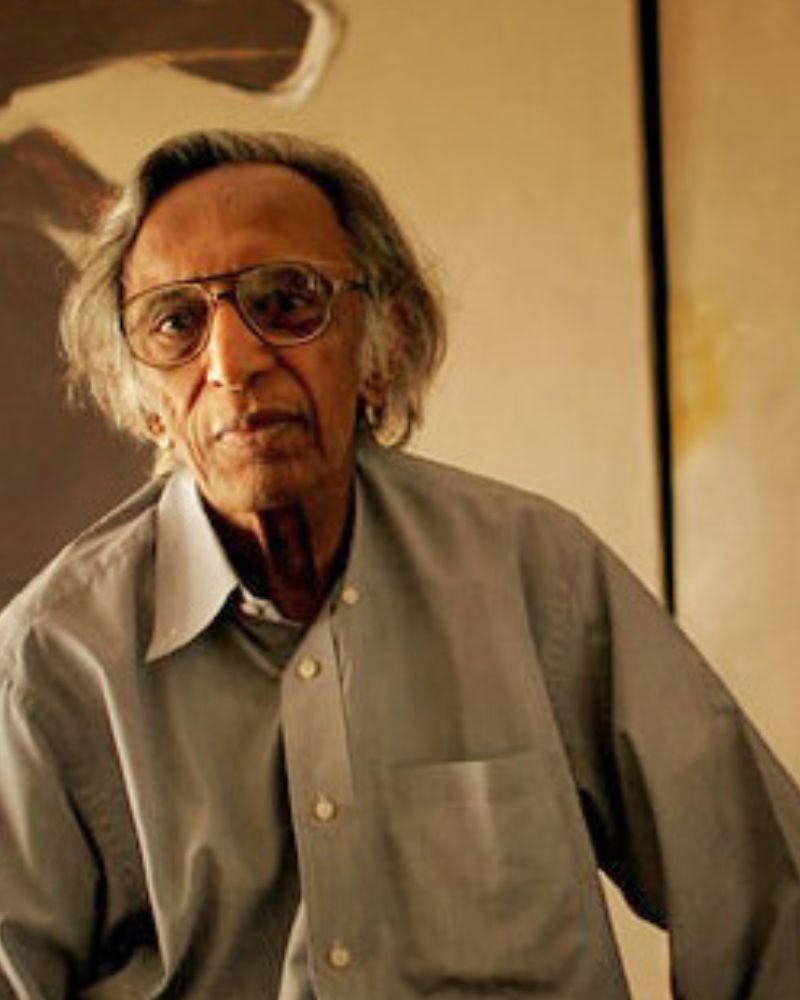Tyeb Mehta: The Master of Fragmented Forms and Emotional Intensity

Tyeb Mehta was a visionary Indian modernist known for his bold compositions, striking use of color, and deeply expressive themes. As a key member of the Progressive Artists’ Group, he redefined contemporary Indian art by blending Western modernist techniques with Indian mythology and socio-political narratives. His work is celebrated for its minimalistic yet powerful aesthetic, making him one of the most influential painters in modern Indian history. Through his powerful emotional intensity, Mehta was able to communicate the complexities of human suffering, identity, and the spiritual essence of life.
A Distinctive Artistic Style
Tyeb Mehta’s paintings are instantly recognizable due to their fragmented figures, strong diagonal lines, and deep emotional resonance. He was influenced by European modernists such as Francis Bacon, Barnett Newman, and Pablo Picasso, but he adapted these influences to create a uniquely Indian visual language that resonated deeply with the socio-political context of post-colonial India.
Mehta’s use of bold, flat colors, geometric structuring, and the deliberate distortion of forms created a sense of movement, tension, and urgency in his works. One of the signature elements in many of his pieces is the diagonal slash, which symbolized rupture, violence, and inner turmoil. This stark, angular cut through the canvas represented the emotional and physical fragmentation that was central to the themes of his art. By using these simple yet dramatic visual tools, Mehta was able to convey profound emotional depth and complexity.
The intensity of his palette—often dominated by fiery reds, deep blacks, and stark whites—served to amplify the psychological weight of his subject matter. Mehta’s abstract forms, stripped of unnecessary detail, allowed for pure emotion to take center stage, making his work resonate on an instinctive level with viewers.
Themes of Struggle and Human Suffering
Much of Tyeb Mehta’s work was deeply concerned with the themes of pain, isolation, and human suffering. He was not afraid to tackle the darker aspects of existence, often exploring themes of violence, captivity, and existential struggle. His famous Trussed Bull series, inspired by his childhood memories of witnessing animals in a slaughterhouse, portrays the brutal force of captivity and helplessness. The image of a bull bound tightly and helplessly evokes a profound sense of violence and oppression. This motif of struggle against force is symbolic of larger human experiences of confinement and suffering, which became a recurring theme in his work.
The Falling Figure series is another example of Mehta’s ability to evoke emotional intensity through minimalism. In these paintings, contorted human bodies appear to be suspended in mid-air, creating a sense of isolation, disorientation, and agony. The figures seem trapped in space, embodying a moment of violent rupture and internal chaos. Through these works, Mehta was able to explore the human condition and the trauma of existence, making them not just visual representations but emotional experiences.
One of his most celebrated works, Kali, reinterprets the Hindu goddess in a raw, abstract form, emphasizing destruction and regeneration. The goddess Kali is depicted with a fierce energy, her form fragmented and chaotic, which conveys both the violence of her destructive nature and the potential for renewal. Mehta’s rendition of Kali encapsulates the duality of life and death, creation and destruction—themes central to both Indian philosophy and the artist’s own personal worldview.
His painting Celebration, which became one of the first Indian artworks to cross the ₹1 crore mark at an auction, marked a significant moment in Indian art history. It not only demonstrated his international recognition but also reinforced his ability to transform deeply emotional and spiritual concepts into universally understood visual language.
Reimagining Mythology with a Modern Lens
As Tyeb Mehta’s work evolved, his interest in Indian mythology grew more pronounced. He found new ways to reimagine ancient narratives through a contemporary, minimalist lens. One of his most iconic paintings, Mahishasura, is a striking reinterpretation of the battle between Goddess Durga and the buffalo demon. Mehta fused modern abstraction with traditional Indian themes to create a work that was both visually powerful and intellectually complex. The figure of Mahishasura, depicted as a swirling mass of energy and form, symbolized the eternal battle between good and evil.
His ability to reinterpret ancient themes with modernist techniques allowed his work to resonate not only with Indian audiences but also with international viewers. His art transcended cultural and temporal boundaries, making him a truly global artist. In doing so, Mehta’s work bridged the gap between tradition and modernity, addressing the timeless human experience through contemporary abstraction.
Legacy and Influence
Tyeb Mehta’s contributions to Indian art remain unparalleled. As one of the most prominent figures in the Progressive Artists’ Group, he played a pivotal role in shaping the direction of Indian modernism. His works are a fusion of intense emotional depth and minimalist abstraction, and they reflect the complexities of both personal and collective experiences.
Mehta’s influence extends beyond his paintings. His ability to translate profound themes into visually compelling art has inspired generations of artists to explore the depths of human emotion, identity, and the human condition. Despite his reserved personality, Mehta’s art spoke volumes, and his legacy continues to reverberate within the global art community. Through his powerful imagery, Tyeb Mehta captured the complexities of human suffering, resilience, and transformation, ensuring that his artistic legacy remains as relevant and impactful today as ever.